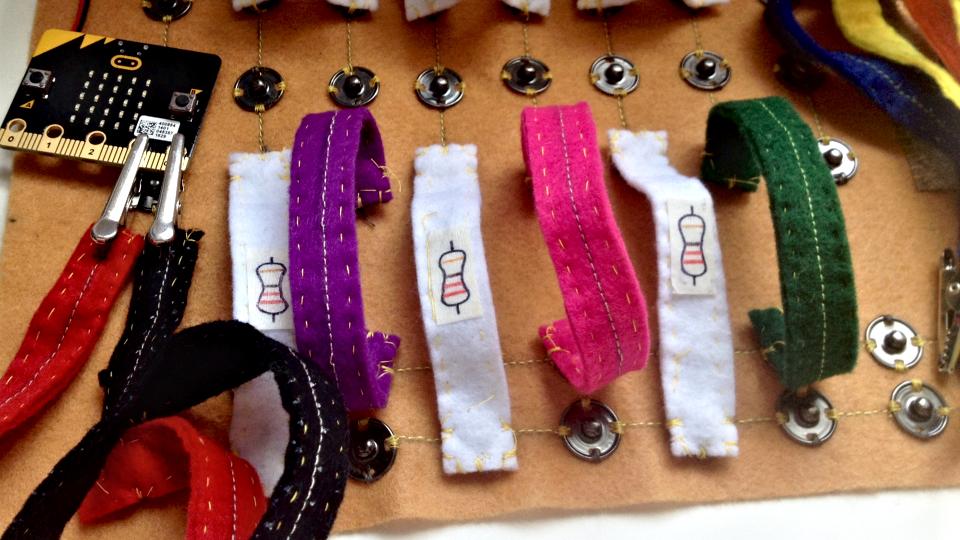Student invents felt circuit boards as tech teaching aids
Primary page content
A computing student from Goldsmiths, University of London has developed a unique felt circuit board to enable primary school children to learn about electricity safely and efficiently.

Elisabetta Motta's felt circuit board
The project, ‘Felt-e’, was created by BSc Creative Computing student Elisabetta Motta as a potential new resource for teaching physical computing to children.
She said: “My research into primary schools found that teachers in computing lessons often lack the resources and time to enthuse young boys and girls about the subject. Felt-e provides a unique, hands on experience for kids and allows them to be creative while learning about electronics. It’s also a resource that’s easy to understand for teachers who might be unfamiliar with computing.”
Elisabetta, 28, surveyed a number of teachers during her initial research, exploring the frustrations of many Key Stage 1 and 2 teachers around lack of computing knowledge and pressures to prioritise literacy and mathematics.
Common feedback included a difficulty keeping pupils focused and lack of resources to run hands-on activities, which inspired the design of the Felt-e board.
Similarly laid out to a breadboard – a commonly used electronic tool which allows the user to lay out components – Felt-e includes two bus strips and ten terminal strips.
Each strip has metallic poppers, to which the user can connect ‘wires’ and other components.
The longer wires have one popper on one end to connect to the board, and a crocodile clip on the other end to connect to the micro controller. The shorter wires have poppers on each end so connect points on the board.
Components are made from white felt with drawings of the relevant electronic symbol on one side and positive and negative signs on each end (if relevant to the component).
The circuit is also compatible with micro controllers including the BBC micro:bit.